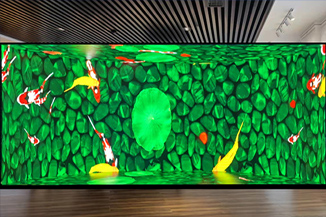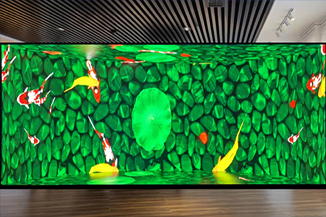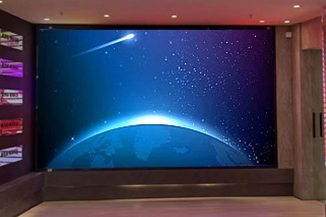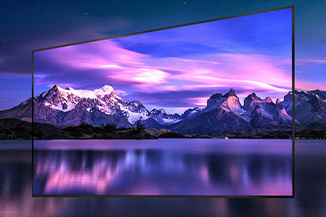Publisher: Supplier of LED Display Time: 2022-12-21 09:49 Views: 1613
At present, LED screens are more and more widely used, so do you know what is included in the integrated technology of multi-functional packaging for high-power LED displays? Next, LCF sent the editor to take everyone to take a look.
Diode, (English: Diode), among electronic components, a device with two electrodes that only allows current to flow in a single direction. Many uses apply its rectification function. The varactor diode (Varicap Diode) is used as an electronic adjustable capacitor. The current directionality of most diodes is usually called "rectifying" function. The most common function of a diode is to only allow current to pass in a single direction (called forward bias), and block it when it is reversed (called reverse bias). So a diode can be thought of as the electronic version of a check valve.
An early vacuum electron diode; it is an electronic device capable of conducting electric current in one direction. There is a PN junction and two lead terminals inside the semiconductor diode. This electronic device has unidirectional current conductivity according to the direction of the applied voltage. Generally speaking, a crystal diode is a p-n junction interface formed by sintering a p-type semiconductor and an n-type semiconductor. A space charge layer is formed on both sides of the interface to form a self-built electric field. When the applied voltage is equal to zero, the diffusion current caused by the carrier concentration difference on both sides of the p-n junction is equal to the drift current caused by the self-built electric field, and it is in a state of electrical balance, which is also a diode characteristic under normal conditions.
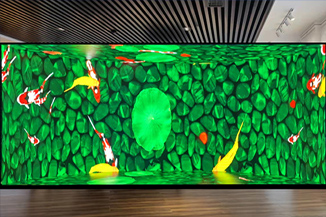
Early diodes included "Cat's Whisker" Crystals" and vacuum tubes (called "Thermionic Valves" in the UK). Most of the most common diodes today are made of semiconductor materials such as silicon or germanium.
characteristic
Positiveness
When the forward voltage is applied, in the initial part of the forward characteristic, the forward voltage is very small, which is not enough to overcome the blocking effect of the electric field in the PN junction, and the forward current is almost zero. This section is called the dead zone. This forward voltage that cannot make the diode conduct is called the dead zone voltage. When the forward voltage is greater than the dead zone voltage, the electric field in the PN junction is overcome, the diode is forward-conducting, and the current rises rapidly as the voltage increases. In the current range of normal use, the terminal voltage of the diode remains almost unchanged when it is turned on. This voltage is called the forward voltage of the diode. When the forward voltage across the diode exceeds a certain value, the internal electric field is quickly weakened, the characteristic current increases rapidly, and the diode conducts forward. Called the threshold voltage or threshold voltage, the silicon tube is about 0.5V, and the germanium tube is about 0.1V. The forward conduction voltage drop of a silicon diode is about 0.6~0.8V, and the forward conduction voltage drop of a germanium diode is about 0.2~0.3V.
Reversibility
When the applied reverse voltage does not exceed a certain range, the current passing through the diode is the reverse current formed by the drift movement of minority carriers. Since the reverse current is very small, the diode is in the cut-off state. This reverse current is also called reverse saturation current or leakage current, and the reverse saturation current of a diode is greatly affected by temperature. Generally, the reverse current of a silicon tube is much smaller than that of a germanium tube. The reverse saturation current of a low-power silicon tube is on the order of nA, and that of a low-power germanium tube is on the order of μA. When the temperature rises, the semiconductor is excited by heat, the number of minority carriers increases, and the reverse saturation current also increases.
breakdown
When the applied reverse voltage exceeds a certain value, the reverse current will suddenly increase. This phenomenon is called electrical breakdown. The critical voltage that causes electrical breakdown is called the diode reverse breakdown voltage. The diode loses its unidirectional conductivity during electrical breakdown. If the diode is not overheated due to electrical breakdown, the unidirectional conductivity may not be permanently damaged, and its performance can still be restored after the external voltage is removed, otherwise the diode will be damaged. Therefore, when using it, the reverse voltage applied to the diode should be avoided to be too high.
A diode is a two-terminal device with unidirectional conduction. It is divided into electronic diodes and crystal diodes. Electronic diodes are less efficient than crystal diodes due to the heat loss of the filament, so they are rarely seen now. They are more common and commonly used. is a crystal diode. The unidirectional conduction characteristics of diodes, semiconductor diodes are used in almost all electronic circuits, it plays an important role in many circuits, it is one of the earliest semiconductor devices, and its applications are also very wide.
The tube voltage drop of the diode: the forward tube voltage drop of the silicon diode (non-luminous type) is 0.7V, the forward tube voltage drop of the germanium tube is 0.3V, and the forward tube voltage drop of the light-emitting diode will vary with different luminescent colors. There are mainly three colors, and the specific voltage drop reference values are as follows: the voltage drop of the red LED is 2.0--2.2V, the voltage drop of the yellow LED is 1.8-2.0V, and the voltage drop of the green LED is 3.0-3.2V, normal The rated current when glowing is about 20mA.
The voltage and current of a diode are not in a linear relationship, so when connecting different diodes in parallel, an appropriate resistor should be connected.
characteristic curve
Like a PN junction, a diode has unidirectional conductivity. Silicon diode typical volt-ampere
Characteristic curve (graph). A forward voltage is added to the diode. When the voltage value is small, the current is extremely small; when the voltage exceeds 0.6V, the current begins to increase exponentially, which is usually called the diode’s turn-on voltage; when the voltage reaches about 0.7V, The diode is in a fully conducting state, and this voltage is usually called the conduction voltage of the diode, which is represented by the symbol UD.
For germanium diodes, the turn-on voltage is 0.2V, and the turn-on voltage UD is about 0.3V. A reverse voltage is applied to the diode. When the voltage value is small, the current is extremely small, and its current value is the reverse saturation current IS. When the reverse voltage exceeds a certain value, the current begins to increase sharply, which is called reverse breakdown, and this voltage is called the reverse breakdown voltage of the diode, represented by the symbol UBR. The breakdown voltage UBR of different types of diodes varies greatly, ranging from tens of volts to thousands of volts.
reverse breakdown
Zener breakdown
Reverse breakdown is divided into Zener breakdown and avalanche breakdown according to the mechanism. In the case of high doping concentration, because the width of the barrier region is small, when the reverse voltage is large, the covalent bond structure in the barrier region is destroyed, and the valence electrons are detached from the covalent bond to generate electron-hole pairs. , resulting in a sharp increase in current, this breakdown is called Zener breakdown. If the doping concentration is low, the width of the barrier region is wide, and Zener breakdown is not easy to occur.
avalanche breakdown
Another kind of breakdown is avalanche breakdown. When the reverse voltage increases to a larger value, the external electric field accelerates the electron drift speed, thereby colliding with the valence electrons in the covalent bond, knocking the valence electrons out of the covalent bond, and generating new electron-hole pairs. The newly generated electron-holes are accelerated by the electric field and then knock out other valence electrons, and the carriers increase in an avalanche, resulting in a sharp increase in current. This breakdown is called avalanche breakdown. No matter what kind of breakdown, if the current is not limited, it may cause permanent damage to the PN junction.
With the increasing trend of global energy shortage, green, energy-saving and environmentally friendly LEDs have attracted much attention. All countries in the world have formulated their own LED lighting development plans. my country's "Twelfth Five-Year Plan" also clearly described the development goals of LED lighting, and listed LED as a key energy-saving project during the "Twelfth Five-Year Plan" period, ranking among the country's seven major strategies Energy-saving and environmental protection industries and new materials industries in the new emerging industries.
With the development of the LED lighting industry, a relatively complete industrial chain has been formed from the production of LED display chips to the lighting market. But for traditional LED lighting, from chip, package, circuit board to application, all links are relatively independent. The lighting needs of different places have put forward various new requirements for LED packaging. How to integrate multiple technologies in the module and make the LED module packaging tend to be miniaturized, multi-functional, and intelligent through system packaging has become a problem that we need to explore. From a technical point of view, LED is a semiconductor device, which can be easily combined with other semiconductor-related technologies to develop products with higher added value and open up new markets that cannot be touched by traditional lighting. The three-dimensional packaging of the LED multi-function system can integrate light sources, active and passive electronic devices, sensors and other components, and integrate them into a single miniaturized system, which is a new technology with great market potential.
LED multifunctional package integration technology
At present, there are some simple LED integrated packaging products on the market, but the integration level is low, which cannot meet the needs of future LED lighting modules for LED packaging products. The development trend of chip module light sources reflects the requirements of the lighting market for technological development: portable products require more integrated light sources; in the fields of commercial lighting, road lighting, special lighting, flashlights, etc., integrated LED light sources have great applications market. Compared with package-level modules, chip-level modules are smaller in size, save space, and also save packaging costs, and because of the high integration of light sources, it is convenient for secondary optical design.
Three-dimensional packaging is an electronic packaging technology developed in recent years. Overall, the important factors to accelerate the application of 3D integration technology to microelectronic systems include the following aspects:
1. The overall size of the system: reduce the system volume, reduce the system weight and reduce the number of pins;
2. Performance: Increase integration density and shorten interconnection length, thereby increasing transmission speed and reducing power consumption;
3. High-volume low-cost production: reduce process costs, such as using integrated packaging and PCB hybrid solutions; multi-chip simultaneous packaging, etc.;
4. New applications: such as ultra-small wireless sensors, etc.;
There are many different advanced system integration methods, mainly including: package stacking technology on package; chip stacking on PCB (wire bonding and flip chip), stacked flexible functional layers with embedded devices; with or without Advanced printed circuit board (PCB) stacking for embedded electronics; wafer-level chip integration; through-silicon via (TSV)-based vertical system integration (VSI). The advantages of three-dimensional integrated packaging include: using different technologies (such as CMOS, MEMS, SiGe, GaAs, etc.) System parasitics and power consumption are reduced. Therefore, 3D system integration technology has great advantages in performance, function and shape. In recent years, various key universities and R&D institutions are developing different types of low-cost integrated technologies.
The State Key Laboratory of Joint Innovation of Semiconductor Lighting has also conducted systematic research on integrated packaging of LED systems. The research is aimed at LED downlights. By developing wafer-level packaging technology, it is planned to integrate some driving components and LED chips into the same package. Among them, the bare chip required by the LED and the linear constant current drive circuit is the main component of the circuit heating. At the same time, the volume is relatively small and easy to integrate. However, due to the main heating component, the heat dissipation design needs to be considered. Other components are bulky and not easy to integrate. Inductors, sampling resistors, and fast recovery diodes, etc., although some heat is generated, do not require special heat dissipation structures.
Based on the above considerations, we design the assembly of the lighting module as follows:
1. The bare chip of the driving circuit and the LED chip are integrated in the package, and the rest of the circuit components are integrated on the PCB;
2. The PCB circuit board is surrounded by the integrated package for easy connection;
3. PCB and integrated package are placed on the heat sink;
The advantages of this structure are: small size; the main heating element is directly in contact with the heat sink through the package, which is easy to dissipate heat; components that do not require special heat dissipation are placed on an ordinary PCB. Compared with MCPCB, the cost is saved; when necessary, the components can be designed on the back of the PCB board and hidden in the empty area of the heat sink to avoid the influence of the components on the light output.
The above is the integration technology of high-power LED display multi-functional packaging compiled by LCF Xiaobian for you. I hope it will be helpful to you. At the same time, you are welcome to add or correct.LCF is a national-level professional and new "little giant" enterprise, a LED display application and solution provider integrating "hardware + software + content + interaction". The main business covers four major sections: "Smart City", "Cultural Tourism Commercial Performance", "Commercial Display Engineering", and "Content Technology". It has the world's leading automated production equipment, modern post-doctoral research laboratories and comprehensive sales and services. team. Friends who need to buy LED display,pleas contact us. LCF LED display manufacturer, a big country brand, trustworthy!

